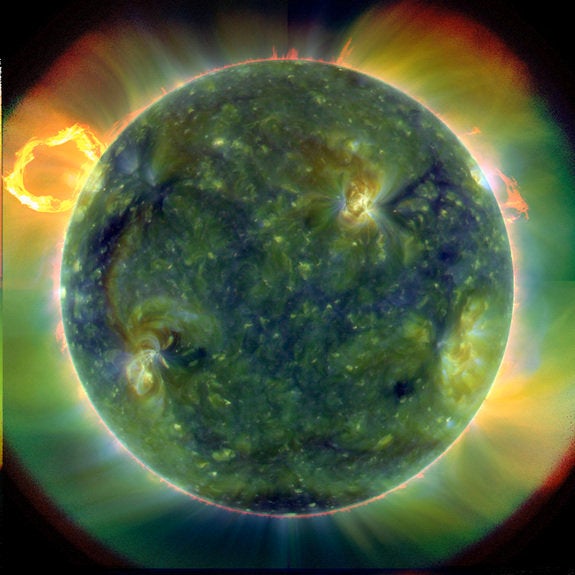Scientists haven't yet figured out whether life is capable of surviving the extreme conditions found in space and spreading to other stars -- a controversial theory known as panspermia.
However, astrophysicists at the Harvard-Smithsonian Center for Astrophysics believe that if panspermia is possible, life would spread out in a characteristic pattern.
Henry Lin, the lead author of new research that has been accepted for publication in The Astrophysical Journal Letters, compared the phenomenon to the outbreak of an epidemic.
“If there’s a virus, you have a good idea that one of your neighbors will have a virus too," he told Smithsonian Magazine. "If the Earth is seeding life, or vice versa, there’s a good chance immediate neighbors will also have signs of life.”

In this artist's rendition of the Milky Way galaxy, translucent green "bubbles" mark areas where life has spread beyond its home system to create cosmic oases, a process called panspermia. New research suggests that we could detect panspermia if it is indeed a real phenomenon.
The research suggests that there are two ways intelligent life can spread across the universe. The first option is for living things to travel intentionally. The second is through a natural process in which comets and asteroids serve as transfer vehicles for biological matter. (Some scientists believe that meteors are responsible for bringing the first primordial life to Earth.)
If the "seeds" of one living planet reach a habitable planet orbiting a neighboring star, according to the paper, they can take root. Over time, the result of this process would be a series of life-bearing oases dotting the galactic landscape.
"In a sense, the Milky Way galaxy would become infected with pockets of life," Avi Loeb, the other author of the paper, said in a press release.
Lin and Loeb note in their paper that even if Earth is the only inhabited planet right now, interstellar travel by humans may one day lead to colonization of the galaxy.
"The question that awaits is whether primitive life has already spread efficiently, or whether it will have to wait for 'intelligent' life to make the voyage," they write.
Also on HuffPost:

